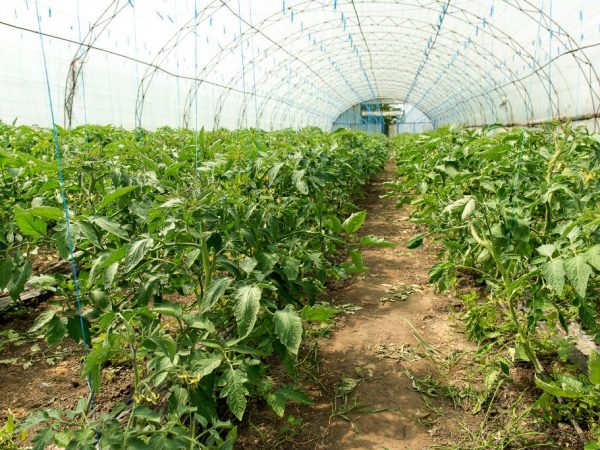How to deal with wireworm in tomatoes
Any gardener, cultivating the land, can find the larvae of the click beetle. Due to its appearance, it received the name "wireworm". At this stage of development, the pest larva infects tubers, roots or rhizomes, as well as stems with fruits located above. Consider what to do if a wireworm appears in tomatoes.

Fighting wireworm in tomatoes
Reasons for the appearance
What can provoke the appearance or multiple increase in the number of clicker larvae? The circumstances leading to this problem can vary.
If the soil is oversaturated with moisture and has an increased level of acidity, it is a favorable environment for the spread of the parasite.
Another reason may be soil brought in from another site, inside which the larvae of the pest have settled down. Humus, used to fertilize the soil, can also become their habitat.
Because weed rhizomes contain many nutrients, they can be a favorite breeding ground. Female click beetles are capable of laying about 150 eggs each.
All this leads to the inevitable infection of the garden with wire-like larvae.
Tatiana Orlova (Candidate of Agricultural Sciences):
Wheatgrass is a food plant for adults of the click beetle. If there is a lot of this malicious weed on the site or near the garden, then we can expect its massive appearance. It is imperative to eradicate wheatgrass in the area, thereby reducing the number of the pest!
Prophylaxis
You can combat the appearance of a wireworm in a greenhouse with tomatoes by placing one of the following components in the seedling hole:
- A small amount of onion husks. This will discourage the parasite from harming plants.
- Mustard powder. Its protective effect affects not only tomatoes, but other vegetables as well.
In order to prevent the growth of the population of the harmful parasite, it is necessary:
- purchase tomato seeds only from trusted sellers;
- choose pink and burgundy tomatoes for planting: the beetle larva does not eat them;
- plant seedlings in soil that has recently been well loosened;
- feed the bushes with fertilizers, since the pest is more attracted to weakened plants.
If it was not possible to avoid damage to the soil, you will have to be patient and start a painstaking and stubborn struggle for the safety of the crop.
Ways to fight

The pest can be exterminated
Exterminate the offspring of the click beetle using simple agricultural techniques.
- First of all, it is necessary to reduce the level of soil acidity by adding lime, chalk, shells from chicken eggs. Wood ash or dolomite flour works well - these are natural fertilizers that contain natural minerals. You can add top dressing at different stages: during loosening or digging, at the time of planting.
- Next, you should pay attention to the distance between the planted bushes. The more it is, the less favorable conditions for the appearance and breeding of wire parasites.
- Loosen the earth as often as possible and let it warm up under the sun - its rays negatively affect the vital activity of parasites.
- Timely get rid of weeds, a breeding ground for pests. It is best to burn the weeds after weeding.
- Collecting and destroying the larvae of the nutcracker and the bugs themselves is a laborious but effective process.
- Between the beds, it is advisable to plant crops that scare away the wireworm parasitizing on tomatoes. It can be beans, peas, buckwheat and many other things that the insect does not eat.
Tatiana Orlova (Candidate of Agricultural Sciences):
Systematic deep (up to 10-12 cm) loosening of the soil from early spring reduces the number of wireworm larvae, because at this time (early spring) they are in the upper layers of the soil.
Some gardeners are forced to resort to placing all kinds of traps on their plots. For example, pieces of any root vegetables are spread on the bottom of glass jars of a small volume and such baits are buried to the level of the neck - a pest that has crawled there for food will not get back.
Chemical method
All these methods of struggle are quite mild and do not have a negative effect on the quality of the grown fruits. But if they turn out to be meaningless, you have to turn to a more aggressive method of exposure - chemical.
It is only necessary to resort to the use of toxic chemicals in exceptional cases. In this case, you must strictly adhere to the manufacturer's instructions and not neglect the safety rules.
- The drugs used for bullying are mainly made on the basis of the active ingredient diazonin. These are granular Provotox, Bazudin, Diazonin 10-RG oil.
Tatiana Orlova (Candidate of Agricultural Sciences):
Diazonin-based drugs have a higher hazard class. Therefore, in the area where such preparations were used, it is recommended not to grow anything for one year!
- Aktara is a granular insecticide that acts in the leaves and stems, but does not affect the fruit.
- To harmless chemicals include a solution with a small content of potassium permanganate, which is used when watering plants. This also includes fertilizers containing nitrogen, such as saltpeter.
- The drug "Nemabakt" does not belong to chemicals. This is a biological product made of tiny nematodes and bacteria that are introduced into the pest's body and destroy it.
Conclusion
In order to effectively combat the pest of tomatoes, agrotechnical measures and special chemicals are used. As a result, the number of harmful individuals is significantly reduced, which has a beneficial effect on the yield.



